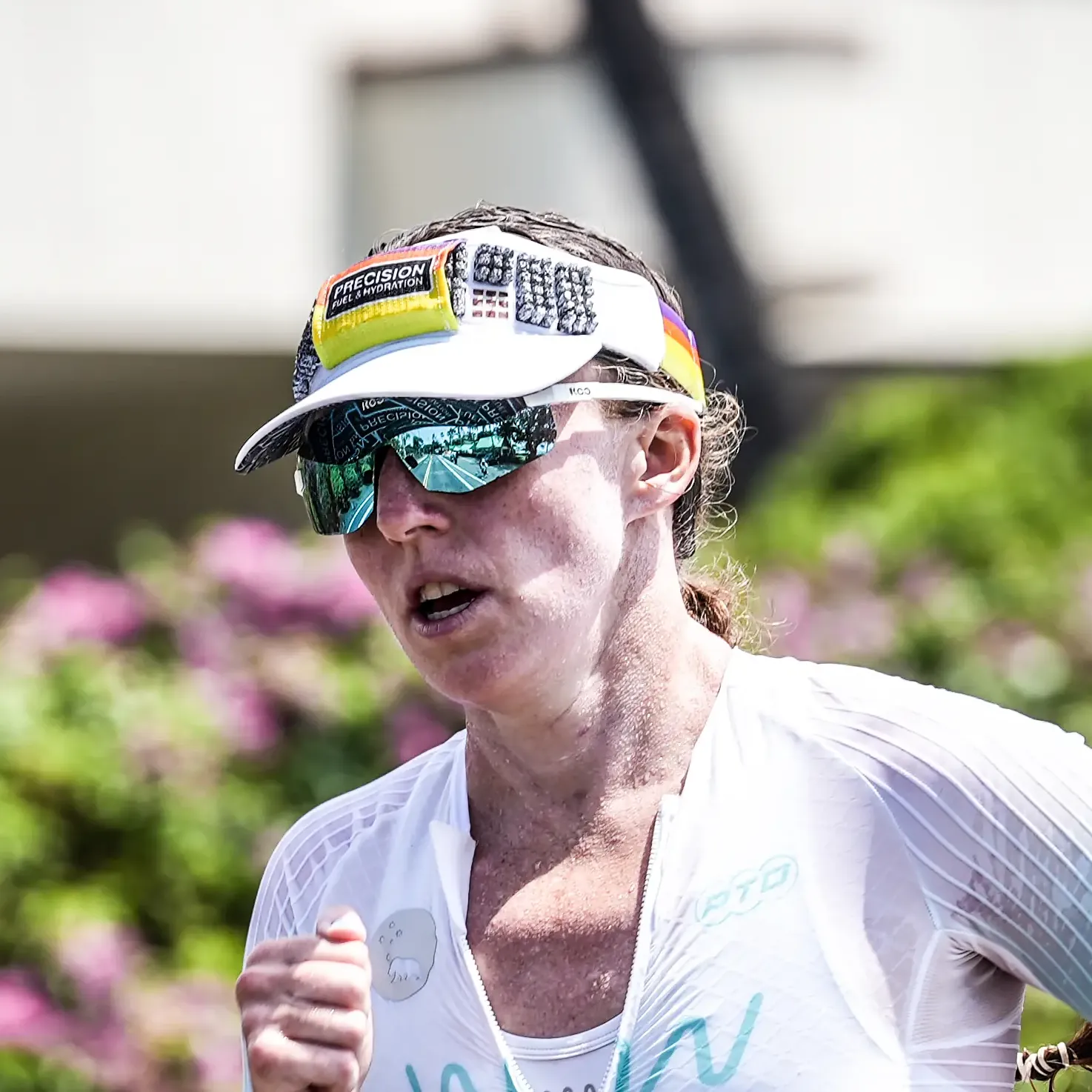
Jocelyn McCauley
IRONMAN® World Championship
Jocelyn's headline numbers
Jocelyn's strategy
Fueling
Carbohydrate is the main fuel you burn when racing. Failing to fuel properly is a leading cause of underperformance in longer races.
This is the highest carbohydrate intake we’ve seen Jocelyn consume on both the bike and the run in a full distance triathlon to date. On average, she took on ~25g/h more than during her 10th place finish at the World Championship in 2023. Jocelyn executed a similar strategy to that of her previous races by relying heavily on PF Carb & Electrolyte Drink Mix, but this time incorporated more PF 30 Gels and PF 30 Caffeine Gels to push her over the 90g/h recommendation and fuel her intense effort. The addition of more gels helped increase her average carb intake, but it’s worth noting that Jocelyn still relied heavily on her bottles for the majority of fuel - which is a strategy that World Champ, Solveig Løvseth also used. This impressive intake over ~9 hours of racing in the harsh Hawaiian conditions is testament to her years of gut training.
Hydration
Taking on board an appropriate amount of fluid and sodium is essential to maintaining blood volume and supporting the cardiovascular effort needed to perform on race day.
Whilst the absolute amount of sodium and fluid consumed per hour is important, it’s critical to consider these in relation to each other. This is known as 'relative sodium concentration' and it’s expressed in milligrams per litre (mg/L). How much sodium you’re taking in per litre of fluid is more important than the absolute amount taken in per hour.
Sweat sodium concentration (mg/L) is largely genetically determined and remains relatively stable. Knowing how salty your sweat is enables you to replace a good proportion of your sweat losses, which can range from 200-2,000mg/L.
Whilst Jocelyn’s losses are on the low side, getting her hydration strategy right is still crucial when it’s hot and/or humid as her higher sweat rate in these conditions can result in significant net losses over the duration of a race.
Learn moreJocelyn’s fluid and electrolyte replacement strategy is something she’s been working on in the last couple of years after experiencing some swelling, bloating and other hydration-related symptoms in past hot races. Jocelyn’s hydration plan for Kona involved a few iterations based on her recent race experiences and an awareness of her high sweat rate. She aimed to drink close to 1.5L/h on the bike and over 1L/h on the run to keep up with her losses in the very hot and humid conditions of Hawaii.
Jocelyn stuck to that perfectly, drinking the initial ~2.5L she carried with her on the bike, plus another ~1L from special needs, before picking up an additional six bottles on the bike. She then picked up six 500ml soft flasks at pro fluid stations on the run. In all of her pre-mixed bottles and flasks, she used PF Carb & Electrolyte Drink Mix, which helped her to replace her sweat sodium losses and avoid any of the hydration-related symptoms she has endured in past hot races.
Caffeine
Beyond the Three Levers of Performance (carb, sodium and fluid), caffeine is one of only a few substances that is proven to improve performance for most endurance athletes as it can help stave off mental and physical fatigue.
Jocelyn is well aware of what works for her and her caffeine tolerance, so she used a very similar caffeine dosing strategy as she has used in past races. The only difference for Kona was timing the intake of her two PF 30 Caffeine Gels on the bike and the one on the run at points where she knew she could gain from the additional physical and mental boosts the most. Given her vast experience on this course, she took one ~1 hour into the bike course ahead of a big climb, and another at the halfway point of the ride, before taking the last at the top of Palani on the run course.
How Jocelyn hit her numbers
Here's everything that Jocelyn ate and drank on the day...
Jocelyn's weapons of choice
Final thoughts
Jocelyn's full stats
Data Confidence?
There is good confidence in the accuracy of the data reported. An athlete feels that the numbers closely reflect what they consumed despite a couple of estimations which may carry some degree of error. The majority of what was consumed is recorded to a high level of specificity (most volumes are known through the use of bottles brands quantities flavours). The numbers are very plausible and align with previous data recordings (if an athlete has collected data previously).